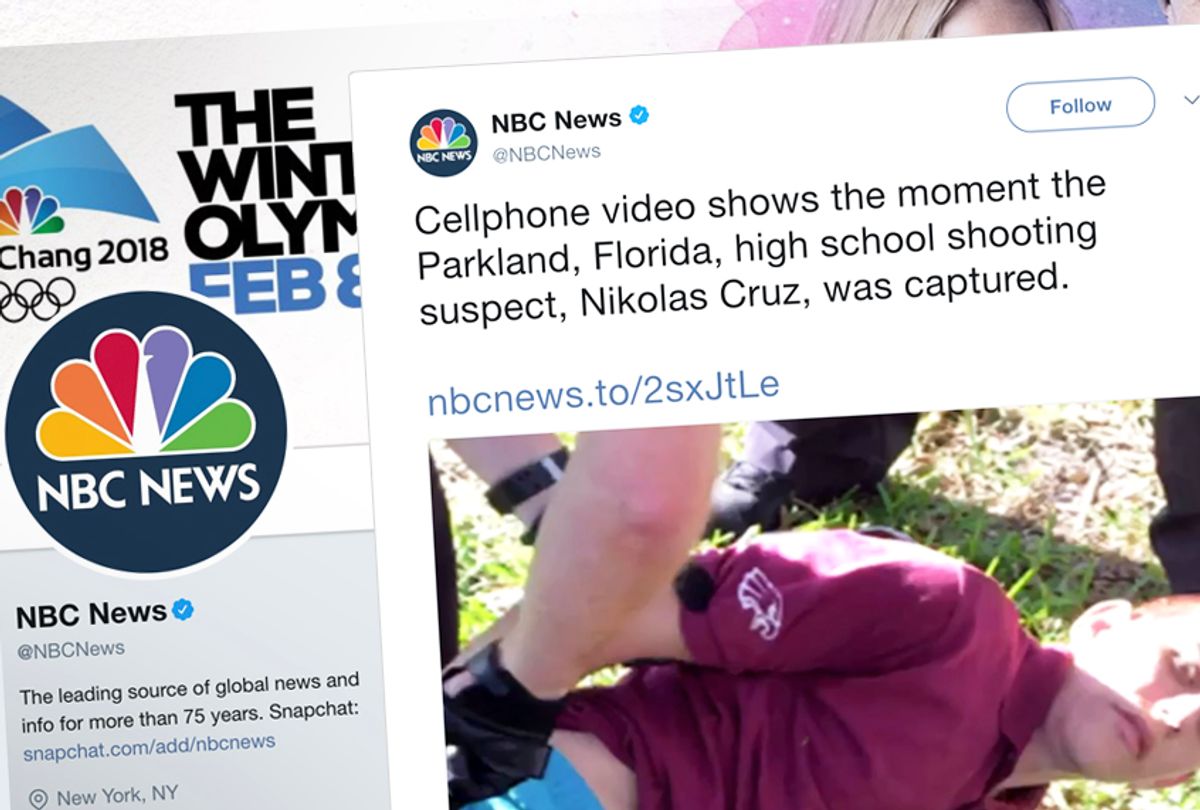Students were huddled in a classroom waiting for help on Wednesday afternoon, after word spread that an active shooter had opened fire at Marjory Stoneman Douglas High School, in Parkland, Florida. Some held up their phones, waiting to capture whatever might come next — and then it happened.
“Police, police, put your hands up,” an officer yelled, as a team of police entered the classroom. “Put your phones away.”
http://twitter.com/Melody_Ball/status/963899789070028800
In one video recording sent to an older sibling from a teen in the classroom, the world got a glimpse into how victims and first-hand witnesses experienced that horrific day — which claimed the lives of 17 people and marked the 18th school shooting in the U.S. in 2018.
People use social media every day to document their lives — mostly the positive or humorous aspects thereof. Only rarely are we forced to consider its role in the context of a life-or-death crisis. When alleged shooter Nikolas Cruz opened fire at Douglas High, many students took to social media to document what was happening. Videos filmed from shaky hands, some from under barricaded desks, began to pop up on social media in real time as the massacre unfolded.
Perhaps the most harrowing video being circulated is from a classroom that the shooter entered. Teens are curled up on the floor, crying and shaking. The video, which was published on Snapchat, is captioned, “Our school is getting f***ing shot up.” From the sound of gunshots, the shooter appears to be very near the student who shot the video. (That video can be viewed here. Some readers may not wish to see it.)
The iGeneration’s reach for their digital devices was instinctive, and understandably so: they are a generation that has grown up with smartphones and social media, after all. Teenagers are used to documenting every part of their lives online; why would a crisis be any different?
But this generation's documentarian impulse had a peculiar and unprecedented effect on the news cycle. By documenting the crisis personally while it was happening, and contributing commentary afterwards, the students weren't just filming and texting: They were also steering the conversation. In a manner not seen in previous mass shootings, the students' outspokenness effectively led to a public re-litigation of the events in real time.
When Donald Trump tweeted his go-to response full of "prayers and condolences," some students responded to him, demanding he acknowledge gun control laws.
"Why was a student able to terrorize my school mr president," one student tweeted.
When Fox News commentator Tomi Lahren tweeted the standard conservative line that "this isn't about a gun," multiple students responded to her on Twitter.
"I was hiding in a closet for 2 hours," one tweeted back. "It was about guns. You weren't there, you don't know how it felt."
There was even live journalism. At one point, when a group of students was hiding from the shooter in a closet, one teenage reporter, reportedly a senior on the school newspaper staff, interviewed classmates on his phone from the closet. (You can watch the interview here, where the kids are asking the government to do something about gun control).
Another student, who was hiding in a classroom, tweeted a video of the students hiding and said “current condition at marjory stoneman douglas.”
After reuniting with his parents, the same student tweeted that he had seen a dead body as he departed.
Danielle Avitable, a CBS news reporter in Jacksonville, shared a video captured by a student of kids running out of the high school.
Another teen tweeted a photo from under his desk, writing “my school is being shot up,” and “I’m f***ing scared."
According to one school employee interviewed by CNN, some students immediately reached for their phones because they believed the incident was likely a prank. In a separate CNN interview, a student said at first she thought the shots were firecrackers.
In times of crisis, live updates can clearly be helpful in spreading public awareness or even assisting the authorities. They can also serve as collective memory banks. Yet the harrowing documentation from Parkland had a different effect, offering unfiltered insight not just into the students' terror but also the depth and complexity of their responses. At this point we can only wonder whether their ability to steer the conversation can motivate lawmakers to work towards tackling America's gun violence problem.
In the video below, Salon's Amanda Marcotte and Alyona Minkovski, along with Jennifer Hoppe, the deputy director of Moms Demand Action for Gun Sense in America, unpack the horrific event, the lack of political action around gun control and the mental health conversation surrounding it.

Shares